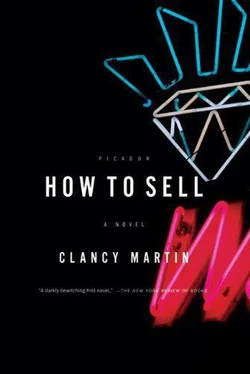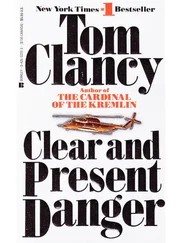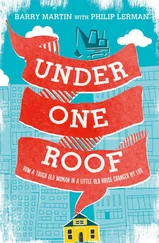“Hurry,” Jim said. He already had the band hung on a wire in the ultrasonic. It was buzzing. He lifted it out, inspected it, rinsed it off in the sink under the tap, and dried it with a paper towel. Then he carefully reattached it to the head. He performed this operation with the patient affection and ease of a mother placing a diaper on her baby.
“Get me a Rolex box,” he said.
I still did not understand what he was up to.
“I thought we were out of Rolex boxes.”
“We are out of real Rolex boxes. Get me one of the Watchman’s boxes. Tell him you don’t want a Chinese one. You want an Italian. One of the green leather ones. The good ones. If he’s not there, look under his desk. That’s where he hides them. Get the whole thing: the exterior box, the books, the papers, everything. Tell him it’s for me. Tell him a hanging tag and crown. The whole damn package.”
He slipped the open-buckled watch over his wrist. He compared it with his own watch. He was checking the timing.
“Look at that bracelet,” he said. “It looked brand-new before I even hit it. This watch isn’t a year old. Look how smooth and tight it is.” He fondled it between his fingers. “Like silk.”
It was very hot in the room with the steamers. Or maybe it was the speed. I knew I had taken too much, but I wanted some more.
“This watch is right on the money,” he said. He took the watch off his wrist and folded up the buckle. He pinched in the soft steel edge of the buckle slightly to tighten it up. It snapped shut with a soft click.
“Why did she bring it in, did she say?” Jim asked me. “Did she say it was running slow? Or it stops?”
For the laugh I said loudly, “She said it stops when she doesn’t wear it.”
Several salespeople around me laughed. There was a line of them waiting to use the steamers.
Many Rolex and other customers who own automatic watches do not understand that for the mainspring to stay wound you have to wear the watch. You run into this at least once a week. The customer takes off her watch because she is going to play tennis or go to the spa and forgets to wear it for a couple of days, and when she puts it back on because they are on their way to meet friends for dinner she is dismayed and confused to see that the watch has stopped. It starts running again as soon as she has it on her wrist so she quickly resets it before her husband notices — why worry him, it was such a nice gift? — and then hurries down the next day to see us. We sell her the four-hundred-dollar COA and explain that it’s not uncommon that a Rolex might require the procedure, even in a new watch, because one never knows how long the watch may have been in the factory in Switzerland before being shipped, and in any event it is part of the regular maintenance of such a fine, rare, and expensive timepiece, which is why it will stay in the family for generations. “Like owning a leopard or a tiger,” you say. “This is no housecat. A bit more in care and feeding but well worth it for the exquisiteness. For the uniqueness.” Then, only after we return the watch to her, we explain how an automatic movement functions, so that we do not see her again in a couple of weeks.
I went to fetch the box.
The Watchman protested.
“Nope. Not an outer box,” he said. “These are the last. You can have the inner box but not an outer. Use one of the big white Taiwanese boxes. We just got in a whole shipment of them. The ones for the big South Sea ropes. The inner fits in one of those. They are almost snug. You can’t have that Rolex outer box. I only have three ladies’ outers left.”
I said, “It’s for Jim,” and he said, “He better be selling a goddamn President. Tell Jim I said it better be nothing less than a goddamn ladies’ President, little brother.”
When I returned with the Rolex box Jim hung the real Rolex tags on the watch and placed it in the counterfeit box. He inspected the real Rolex books and the counterfeit papers and placed them carefully under the leather box in the counterfeit cardboard outer box. It was a lovely green box, untouched, it looked like it had been made a few minutes before, with that Rolex oyster artwork printed all over it. Then he placed the gold crown on top of the leather box and closed up the whole package.
“Okay, follow me,” he said.
We went back out on the sales floor. He elbowed his way through the throng of salespeople lining the counter toward the diamond room.
Lisa waved to me from the pearl showcase and winked. She was showing a long double rope of pearls. I waved back to her. She waved again and smiled, and I realized that the first time she had been waving to Jim.
Jim stopped outside the diamond room door.
“Okay, Bobby, you only listen. Not one word,” he said. “Stand in the corner, be invisible, and learn. Don’t even ask him if he wants another drink. Let me do that.”
He opened the sales door to the diamond room and put his head in.
“Good news,” I heard him say. “I found one,” he said.
I followed him in and stood in the corner. The customer, an obviously important customer, sat at the diamond table. Jim sat down next to Dennis and placed the Rolex box showily on the table, a large antique desk with spindly legs. The legs did not look like they could support the desk. In the center of the desk was a diamond pad, and on the silk pad was the alexandrite necklace.
The alexandrite necklace was a white elephant Sheila had bought at the Jewelers Circular Keystone Las Vegas show a year and a half before. It was tagged at four hundred thousand dollars and I knew it had a twenty-thousand-dollar bonus plus the regular ten-percent-of-the-net commission. It was fifty-two carats of perfectly calibrated square-cut natural Siberian untreated full-color-change alexandrite set in eighteen-karat green gold. The center stone was six carats and, loose, was worth fifty thousand dollars. In natural sunlight the necklace was bright green, green like five-thousand-a-carat Colombian emerald. Here in the artificial light of the halogens it was pigeon-blood red. On the way outside, if you were carrying it in your hands or wearing it on your neck, it would pass through half the colors of the spectrum, each one individually recognizable.
But it was impossible to sell. Alexandrites have no sparkle, and if a husband or a lover has spent half a million dollars on her necklace a woman wants her friends to know that her necklace cost half a million dollars, and one can only be sure of that with big diamonds. At the very least she wants some rubies or emeralds. Something they recognize. Alexandrites you have to explain, and that defeats the purpose. That was why, unlike all of our other showpieces, the necklace never went to any society parties. It was perhaps the most beautiful piece of jewelry you would ever see, but it lacked the crucial quality of all jewelry: bang for your buck. Flash for your cash. Like a Fabergé egg.
I had seen this customer in the store before but did not know his name. He was a large, strangely pale man, wearing black crocodile boots and a leather baseball cap, with very dark eyes, eyes that looked black until you looked at him from the side and saw they had many dark brown rings around the pupils. As white as his skin was, he nevertheless had the exaggerated jaw and facial features of an Indian, like the Iroquois you would see sleeping in the bus stations or by the train tracks back in Calgary. But here with his beaded belt and his cowskin vest he was an American cowboy.
He wore a platinum President and a platinum wedding ring with a seven-carat emerald-cut in the center. I remembered when Dennis sold that ring, just a few weeks after I arrived at the store. Jim had bragged about it during a sales meeting. It was sixty thousand dollars, and the customer had paid in cash.
Читать дальше











